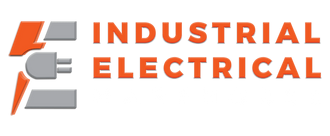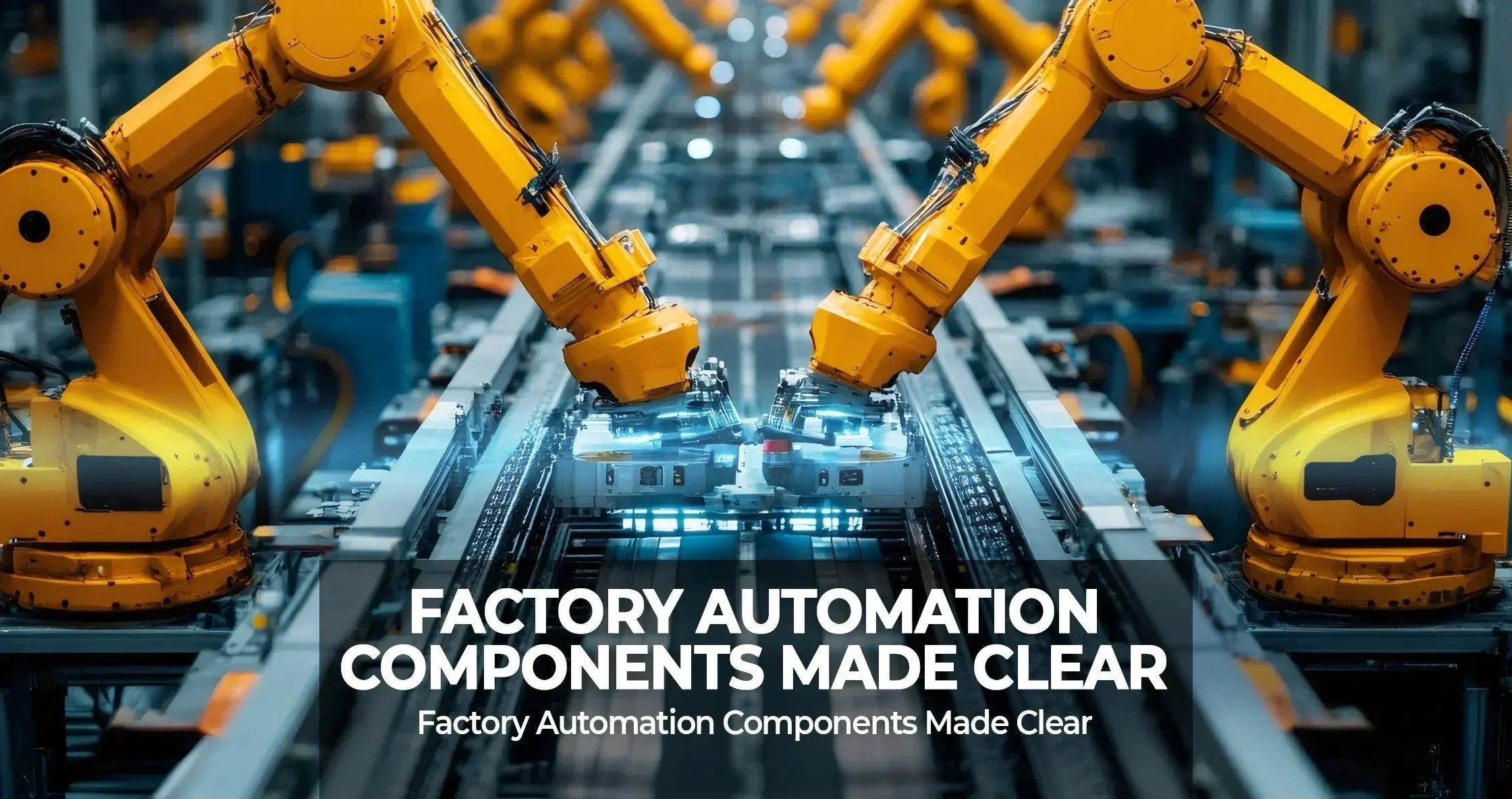nderstanding Factory Automation Components: The Building Blocks of Modern Manufacturing
In today's fast-paced industrial landscape, factory automation is no longer a luxury—it's a necessity. From improving production efficiency to enhancing product quality and safety, automation offers tangible benefits across sectors. Central to this transformation are the factory automation components that enable machines, systems, and processes to operate autonomously and intelligently. Understanding these components is essential for engineers and procurement officers seeking to design, maintain, or upgrade modern automation systems.
This guide provides a comprehensive overview of the most important factory automation components, including sensors, programmable logic controllers (PLCs), drives, actuators, HMIs, and industrial networks. Each section explores what these components do, how they work, and why they matter in today's smart manufacturing environments.
Sensors: The Eyes and Ears of Factory Automation
Sensors are among the most fundamental factory automation components. They collect real-time data from machines and the environment, enabling systems to make informed decisions. Whether detecting the presence of an object, measuring temperature, or monitoring pressure levels, sensors provide the critical feedback loop required for automation to function.
Common types of sensors used in factory automation include:
- Proximity Sensors: Detect the presence or absence of objects without physical contact.
- Photoelectric Sensors: Use light to detect objects or changes in surface conditions.
- Temperature Sensors: Monitor thermal levels to ensure optimal machine performance.
- Pressure Sensors: Measure fluid or gas pressure within pneumatic and hydraulic systems.
- Position Sensors: Provide accurate data on movement or rotation of components.
These components are essential for maintaining consistency, reducing downtime, and ensuring operational safety. When properly integrated, sensors allow automated systems to react dynamically to changing conditions.
PLCs: The Brains Behind Industrial Automation
Programmable Logic Controllers (PLCs) are critical factory automation components that serve as the decision-makers in an automated system. Originally developed to replace hardwired relay logic, PLCs have evolved to become highly sophisticated controllers capable of executing complex instructions.
PLCs receive input from sensors, process the data, and issue commands to actuators and other output devices. They offer scalability, flexibility, and durability, making them ideal for harsh industrial environments.
Key features of PLCs:
- Modular architecture: Easy to expand or modify.
- Real-time processing: High-speed response to inputs.
- Rugged design: Built for temperature, vibration, and electrical noise.
Whether managing a single machine or coordinating an entire assembly line, PLCs play a central role in modern automation systems.
Drives and Motors: Power and Precision
Another critical category of factory automation components includes drives and motors, which provide the mechanical movement required in automated machinery. Drives regulate the speed, torque, and direction of electric motors, ensuring precise control over operations.
Common drive and motor systems include:
- AC Drives: Control the speed of AC motors used in fans, conveyors, and pumps.
- Servo Drives and Motors: Enable precise positioning for robotics and CNC machines.
- Stepper Motors: Used for applications that require precise control without feedback.
These components enhance efficiency, reduce energy consumption, and improve the accuracy of production processes. Proper drive selection can significantly impact overall system performance and longevity.
Actuators: Turning Signals Into Action
Actuators convert electrical signals from the PLC into physical movement. They are the muscle of any automated system, enabling tasks like opening a valve, moving a robotic arm, or lifting an object.
Types of actuators used in factory automation:
- Pneumatic Actuators: Use compressed air for fast, clean movements.
- Hydraulic Actuators: Offer high force output for heavy-duty applications.
- Electric Actuators: Provide precise control with low maintenance.
Selecting the right actuator depends on the application's requirements, including speed, load, and environmental conditions. As factory automation components, actuators play a vital role in translating decisions into mechanical actions.
HMIs: The Human-Machine Interface
Human-Machine Interfaces (HMIs) bridge the gap between operators and automation systems. They allow users to monitor, control, and troubleshoot operations through graphical interfaces.
Typical HMI features include:
- Touchscreen displays: Provide intuitive access to system data.
- Real-time status updates: Keep operators informed.
- Alarm and notification systems: Alert users to potential issues.
HMIs enhance usability, reduce training requirements, and facilitate rapid response during production. These factory automation components are key to ensuring safe and efficient interaction between humans and machines.
Industrial Networks: Connecting the Dots
Factory automation components must communicate seamlessly for systems to function as intended. Industrial networks and protocols connect PLCs, sensors, HMIs, drives, and other devices.
Common industrial communication protocols include:
- Ethernet/IP
- PROFINET
- Modbus
- DeviceNet
These networks support real-time data exchange, diagnostics, and system coordination. A robust network infrastructure ensures scalability and reliability in modern smart factories.
Safety Components: Protecting People and Equipment
Safety is paramount in any automated environment. Factory automation components dedicated to safety help prevent accidents and protect equipment.
Key safety devices include:
- Emergency stop buttons
- Safety relays and contactors
- Light curtains and safety mats
- Safety PLCs
Integrating safety into the automation system ensures compliance with regulatory standards and fosters a culture of proactive risk management.
Vision Systems and Robotics: Advancing Smart Manufacturing
Vision systems and robots are advanced factory automation components that elevate productivity and flexibility.
Machine vision systems inspect products for defects, guide robotic arms, and ensure alignment and quality.
Industrial robots perform repetitive tasks such as welding, painting, and pick-and-place operations with speed and precision.
These technologies enable high-volume, high-precision production, supporting lean manufacturing and Industry 4.0 goals.
Power Supplies and Enclosures: Supporting the Backbone
While often overlooked, reliable power supplies and protective enclosures are vital to system stability. Power supplies ensure consistent voltage and current for all factory automation components. Enclosures protect equipment from dust, moisture, and mechanical damage.
High-quality support components contribute to uptime, prevent equipment failure, and enhance safety.
Conclusion: Building a Smart and Efficient Factory
Understanding the core factory automation components is crucial for engineers, system integrators, and procurement professionals. From sensors that detect changes to PLCs that process data and actuators that move machinery, each component plays a vital role in enabling efficient, safe, and intelligent operations.
As factories embrace smart technologies and data-driven manufacturing, selecting the right combination of components becomes even more critical. Whether you're upgrading a legacy system or designing a new one, a holistic understanding of automation hardware empowers you to make informed decisions.
Explore these product collections to start building or upgrading your system:
Visit our full Automation & Controls collection to find everything you need to modernize your factory.


